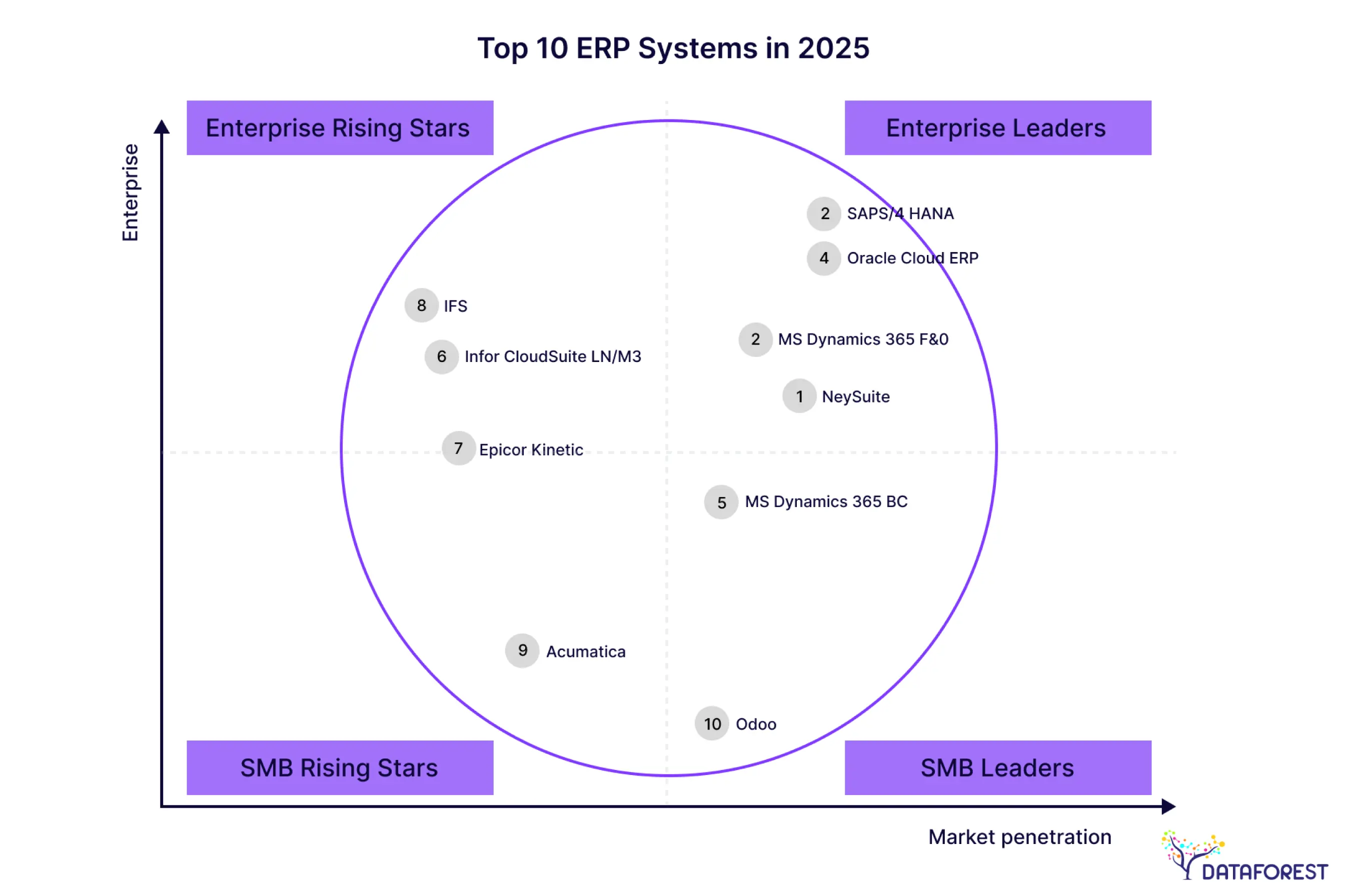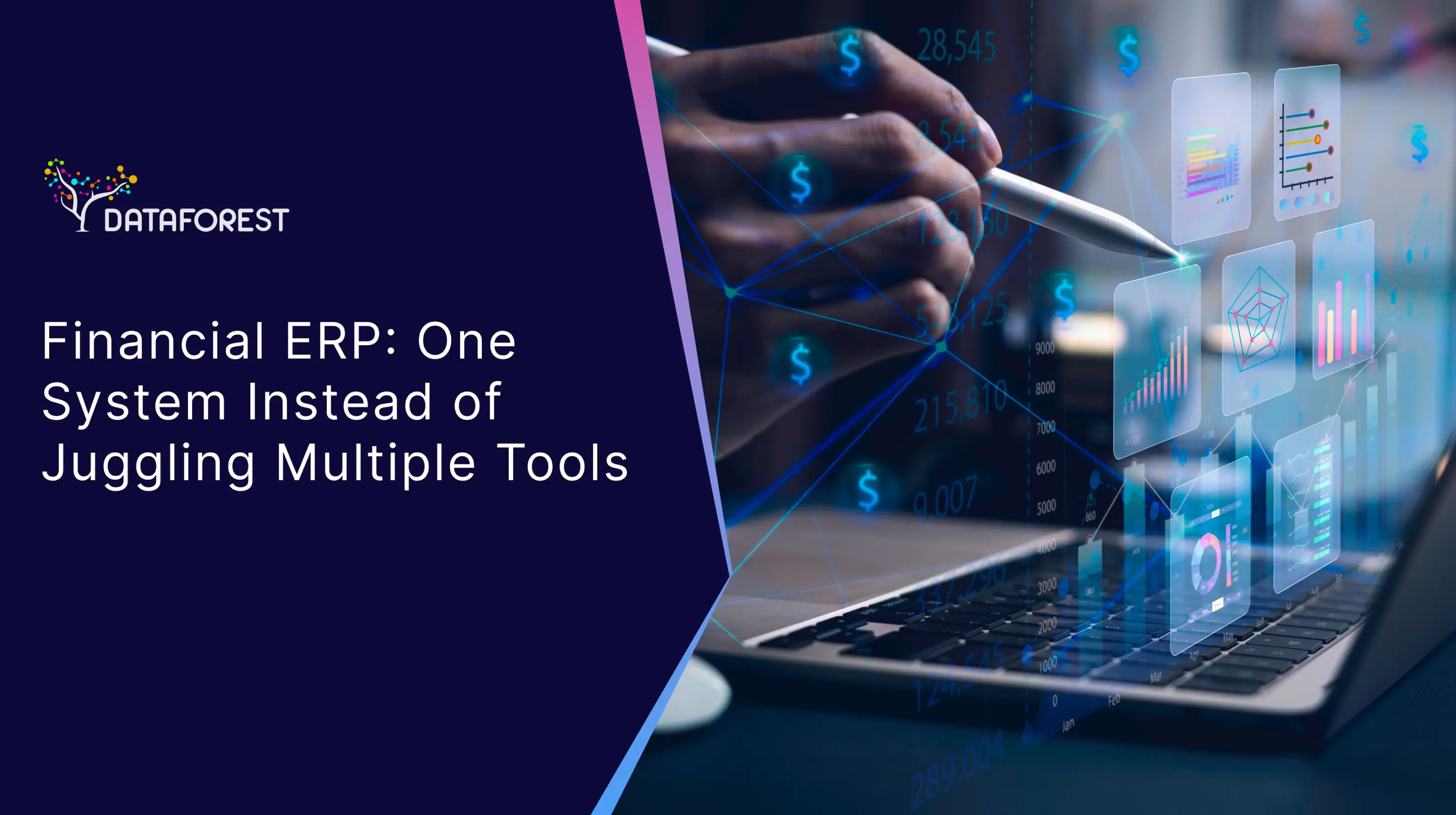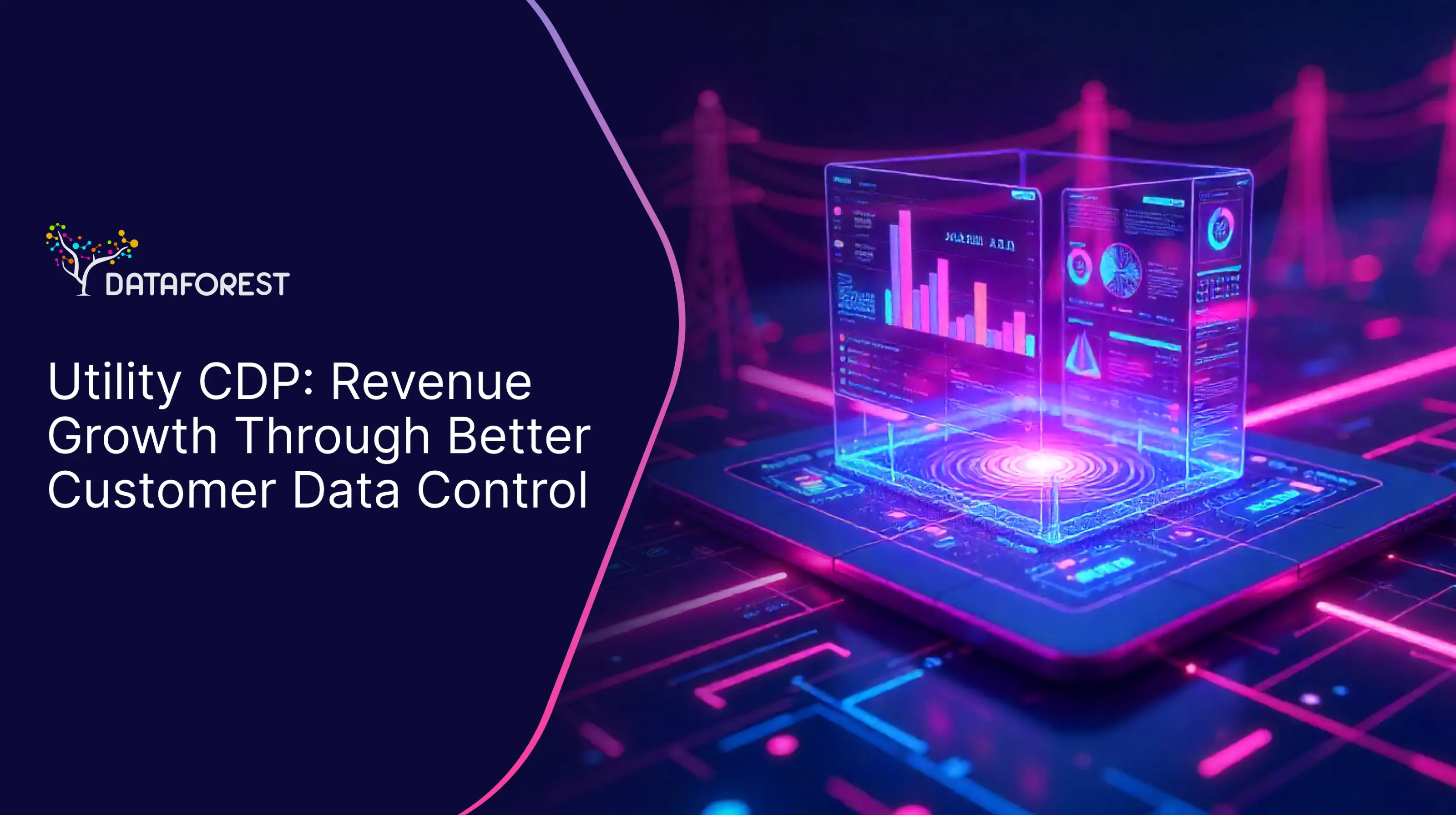A mid-sized investment firm built a custom financial ERP system because its 12 different software tools were unable to communicate with each other, resulting in missing client money transfers. After 18 months and $2.3 million, they can now track every dollar from client intake to final reporting. Schedule a call to complement reality with a profitable ERP for financial services.

What's Stopping Your Financial Advisory Firm from Running Smoothly?
McKinsey notes that the U.S. is expected to face a shortage of approximately 100,000 financial advisors by 2034, due to retirements outpacing recruitment efforts. It requires boosting advisor productivity by 10–20% and recruiting 30,000–80,000 net new advisors over the next decade. It is already clear that they will all require custom ERP solutions for financial institutions. Below, we will talk about the challenges that are relevant right now because financial firms burn money on problems that shouldn't exist in 2025.
Regulatory Maze
Financial advisors face rules that change faster than software updates. You spend weeks figuring out what compliance even means for your specific situation. One missed filing can cost you $50,000 in fines. Your competitors are dealing with the same confusion, but nobody talks about it. Most firms just hire more compliance people and hope for the best. A custom ERP can reduce manual oversight by streamlining compliance workflows, thereby enhancing overall efficiency.
Data Breaches Waiting to Happen
Client financial data sits in systems built when security meant a password. Hackers target financial firms because that's where the money lives. Your insurance policy won't cover the reputation damage when clients' retirement accounts get exposed. You know you need better security, but every vendor promises the moon. Most security upgrades break something else you depend on unless they are integrated through a secure, custom ERP platform.
Software That Doesn't Talk
Your CRM doesn't connect to your portfolio management system. Your accounting software lives in its own world. You manually copy data between systems because integration costs $100,000 and takes eight months to complete. Employees waste two hours daily on tasks a computer should handle. The real cost isn't the software licenses—it's the human time you're burning. That’s where a well-designed financial custom ERP can immediately pay for itself.
Reports That Eat Your Life
Regulatory reports are completed by three people in four days each month. You pull data from six different systems and pray the numbers match. Clients want custom reports that require Excel gymnastics. Your team stays late because manual reporting always takes longer than expected. Automation exists, but most solutions don't work with your specific software mix—unless you invest in custom ERP solutions for financial institutions.
Why Do Financial Firms Build Their Own Software Instead of Buying It?
Most financial software doesn't match how your firm actually works. Building a custom ERP means you control the process instead of letting it control you. That’s why many are now building ERPs for financial services instead of relying on outdated off-the-shelf systems.
What ERP Really Means
ERP stands for Enterprise Resource Planning, which sounds like a term used by consultants. Think of it as one system that tracks everything your business does. Instead of five different programs that don't talk to each other, you get one. Your client data, compliance records, billing, and reports live in the same place. It knows when a client calls, what they own, and what they owe. The system connects the dots so humans don't have to. Most firms use multiple disconnected tools because that's how they have grown over time until they realize the need for a custom ERP system that unifies their operations.
Building vs. Buying Software
Off-the-shelf ERP systems may cost less upfront, but they rarely meet the specific needs of financial firms. They're built for generic businesses, not firms managing other people's money. Custom ERP solutions for financial institutions cost more and take longer, but they do exactly what you need. The trade-off is control versus convenience. Buying software means living with someone else's idea of how you should work. Building software means you decide how the system behaves. Most firms pick based on their tolerance for compromise versus their available cash.
✓ = Advantage, ✗ = Disadvantage, ~ = Neutral/Mixed
If you need an individual approach to a solution, book a call.
Why Generic Solutions Fail Finance
Financial advisory work doesn't follow standard business patterns. Your workflows depend on regulations that are constantly changing. Client relationships span decades, not typical sales cycles. You need audit trails that compliance tracking in ERP supports, not ones that generic CRMs pretend to handle. Every client situation requires different documentation and different compliance steps. Standard software assumes simple processes that don't exist in financial services. Generic solutions force you to change how you work instead of supporting how you operate. A custom ERP for financial advisory removes this disconnect by aligning with how you run your business.
What Does Custom ERP Software Actually Do for Financial Advisors?
Most firms think they need fancy features, but what they need is for their data to stop living in different places.
Custom ERP enables efficient client intake by distributing data effectively. A service ERP enables efficient client intake by distributing data effectively. You stop asking clients for the same information three times because CRM and ERP integration finally make your systems talk to each other, with an ERP for small financial firms doing the heavy lifting.
Custom ERP eliminates compliance report headaches. Financial reporting automation pulls data automatically, eliminating the need for manual copy-paste marathons. Your audit trail builds itself, but you still need someone who understands the regulations.
Custom ERP integrates portfolio data in real time. Integration with accounting software connects your portfolio systems directly to your central database, eliminating the need for daily CSV uploads. Real-time data means you see problems before clients call, though market data feeds still cost extra.
Custom ERP unifies client records in one CRM. The CRM and ERP integration unifies client records in a single location. Built-in CRM means that client history, documents, and communication are all stored together. Your team sees the whole picture without having to switch between four different programs.
Custom ERP automates repetitive workflows. Workflow automation for financial advisors handles routine follow-ups and deadline reminders. You program the rules once, then the system nags people for you.
Custom ERP powers secure client portals. Cloud-based ERP for finance may offer convenience, but a custom ERP for financial advisory powers secure client portals that enable document uploads and account access with complete control over visibility. Clients can still call with questions—that's the power of tailored ERP solutions in financial services.
What Money Do You Save with Custom ERP?
Building software costs more upfront, but most firms save money within two years if they do it right.
Less Money Burned on Busy Work
- Your team stops spending 10 hours weekly copying data between systems, with ERP software doing it automatically
- One person handles compliance reports that used to require three people
- Client onboarding drops from 6 hours to 45 minutes per new account
Clients Stop Leaving for Better Service
- Response times improve when you have client history in one place
- Fewer mistakes happen when data is only entered once into ERP systems
- Clients notice when you remember their last conversation without asking them to repeat it because your financial planning tools work
Audits Stop Being Nightmares
- Complete audit trails exist automatically instead of piecing together records
- Regulatory changes get implemented across your entire system
- You sleep better knowing compliance documentation exists and is findable
You Compete with Bigger Firms
- Custom ERP systems let small firms offer enterprise-level client experiences
- You move faster than competitors stuck with vendor-updated schedules
- Clients see professional operations instead of cobbled-together software chaos—investment advisory process optimization becomes your new standard
What Happens When a Financial Firm Builds Its Own ERP?
A financial advisory firm experienced manual handoffs between Salesforce and Sage Intacct, resulting in billing delays and compliance issues. The firm connected it via middleware, not a pre-built system, but a custom ERP integration approach.
The custom quote‑to‑cash flow pushed deals in Salesforce straight into invoicing and revenue modules in Intacct in real time. They used standard connectors where available and built custom scripts for gaps—no unnecessary complexity.
After four months, billing mistakes nearly disappeared, reporting was live, and finance reclaimed hours previously lost to reconciliation. ROI hit over 200% within the first year, but the custom ERP system didn’t auto-generate forecasts or replace human judgment. The firm gained speed and cleaner data, but at the cost of increased integration efforts and ongoing upkeep. This is the reality of building a custom ERP solution for financial institutions.
How Do You Not Mess Up Building Custom ERP Software?
Most firms skip planning and end up with expensive software that doesn't work.
- Write down every manual task your team does weekly. Start with a scoped-out plan of exactly what your custom ERP needs to eliminate. List which systems that don't talk to each other and why that costs money. Your goals need specific numbers, not vague hopes about "efficiency improvements." A proper financial ERP starts with accurate scoping.
- Interview teams who built software for other advisory firms, not generic business apps. Choose a vendor that has experience building custom ERP systems for financial institutions. Ask for references you can actually call, then call them and ask about problems that came up. Cheap developers cost more when they build the wrong thing.
- Budget 50% more money and time than the initial estimate because something always breaks or changes. Custom ERP builds rarely adhere to the shortest timelines. Most projects take 18-24 months, not the 6 months everyone hopes for. Factor in your internal time for testing and feedback rounds. The scalability of ERP systems comes with complexity.
- Plan training before the software launches, not after people are frustrated with it. Decide who handles ongoing support internally versus what you'll pay developers to maintain. Your ERP for financial services needs to grow with your firm, which means ongoing development costs. Train early and maintain often—financial planning requires adaptability, and a custom ERP must evolve as your business does.
DATAFOREST Delivers a Custom ERP That Works
DATAFOREST delivers an integrated financial ERP system built with microservices and middleware to unify your CRM, accounting, and reporting systems. We automate quote-to-cash workflows, billing, compliance checks, and reconciliations with custom connectors when out-of-the-box tools fall short. Our team equips you with real-time dashboards, alerts, and rule-based triggers, enabling you to detect errors quickly and control workflow complexity. You get cleaner data, fewer billing errors, and smoother operations—but integration takes time, and upkeep is your responsibility from day one. Please complete the form to realize custom ERP solutions for financial institutions.
FAQ On Custom ERP Solutions for Financial Institutions
How secure is a custom ERP compared to cloud-based off-the-shelf solutions?
A custom ERP for financial services can be more secure because it’s built to your exact needs, reducing unnecessary attack surfaces. However, security depends on how well it’s maintained and updated, so ongoing investment is essential.
What specific processes in financial advisory can be automated through a custom ERP?
Financial ERP systems can automate client onboarding, billing, compliance reporting, and data reconciliation, streamlining these processes for enhanced efficiency. It also helps streamline portfolio management workflows and regulatory filings.
Will our staff need training to use the new custom ERP system?
Yes, staff will require training tailored to your specific custom ERP workflows. The complexity and duration depend on the level of customization and the degree of difference from current systems.
What’s the difference in cost between a custom ERP and a licensed SaaS product?
Custom ERP solutions for financial institutions typically have higher upfront costs due to the development and integration work required. SaaS products charge subscription fees but can become expensive over time and may lack necessary customization.
Will custom ERP help reduce manual errors and compliance risks?
Yes, custom ERP for financial services reduces errors by automating data flows and enforcing business rules. It also helps track compliance tasks consistently, but it doesn’t eliminate the need for human oversight.




.webp)



.webp)















